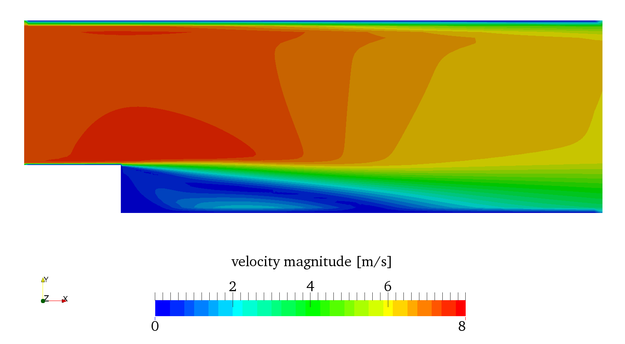Difference between revisions of "Stationary turbulence modeling (RAS) by Jozsef Nagy"
Jump to navigation
Jump to search
Jozsef Nagy (talk | contribs) |
Jozsef Nagy (talk | contribs) |
||
| Line 35: | Line 35: | ||
* '''contributor''': Bahram Haddadi, Jozsef Nagy and Christian Jordan | * '''contributor''': Bahram Haddadi, Jozsef Nagy and Christian Jordan | ||
* '''affiliation''': Forschungsgruppe Thermische Verfahrenstechnik & Fluiddynamische Simulation am Institut für Verfahrenstechnik der Technischen Universität Wien, Austria | * '''affiliation''': Forschungsgruppe Thermische Verfahrenstechnik & Fluiddynamische Simulation am Institut für Verfahrenstechnik der Technischen Universität Wien, Austria | ||
| − | * '''contact''': bahram.haddadi.sisakht@tuwien.ac.at | + | * '''contact''': <mail address='bahram.haddadi.sisakht@tuwien.ac.at' description='author'>click here for email address</mail> |
* '''OpenFOAM version''': 2.3.0 | * '''OpenFOAM version''': 2.3.0 | ||
* '''Published under''': CC BY-NC-SA license ([https://creativecommons.org/licenses creative commons licenses]) | * '''Published under''': CC BY-NC-SA license ([https://creativecommons.org/licenses creative commons licenses]) | ||
Revision as of 12:59, 28 September 2016
- contributor: Jozsef Nagy
- affiliation: Institute of Polymer Injection Molding and Process Automation, Johannes Kepler University Linz, Austria
- contact: jozsef.nagy@jku.at
- OpenFOAM version: 2.3.0
- Published under: CC BY-NC-SA license (creative commons licenses)
Go back to Day 7.
Stationary turbulence modelling (RAS)
Most of the real life problems you would like to tackle include some sort of turbulence. These videos
will give you a detailed explanation on steady-state turbulence modelling in OpenFOAM. It is important to understand the difference between models and which one to choose for a given problem. It is also important to know, how to select a specific model and what you have to change in order to run a successful simulation. You will learn about
- steady-state turbulence modelling
- Reynolds-Averaged Navier-Stokes equations
- RAS models
- case setup
- boundary and initial conditions
- post processing
You can download the blockMeshDict [https:// github.com/jnmlujnmlu/OpenFOAMTeaching/tree/master/JozsefNagy here].
- contributor: Bahram Haddadi, Jozsef Nagy and Christian Jordan
- affiliation: Forschungsgruppe Thermische Verfahrenstechnik & Fluiddynamische Simulation am Institut für Verfahrenstechnik der Technischen Universität Wien, Austria
- contact: click here for email address
- OpenFOAM version: 2.3.0
- Published under: CC BY-NC-SA license (creative commons licenses)
- additional acknowledgements: Clemens Gößnitzer, Vikram Natarajan, Sylvia Zibuschka, Michael Harasek
[http:// www.cfd.at/downloads/2014_OFoam_Tut_Example%20Six.pdf Stationary turbulence modelling (RAS)]
In this [http:// www.cfd.at/downloads/2014_OFoam_Tut_Example%20Six.pdf pdf] you will find a written step-by-step walkthrough of the tutorial above.
